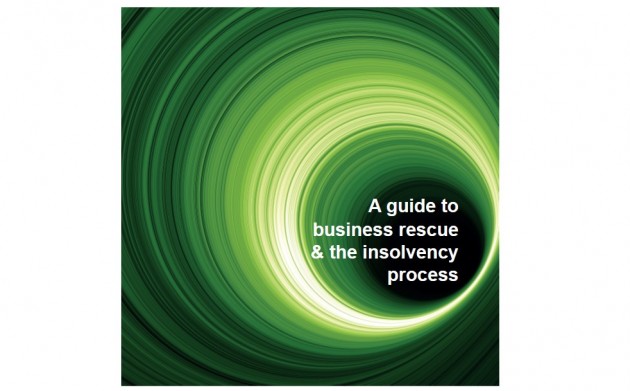Company Options - Formal Arrangements - Liquidation
Liquidation is an accounting process to bring a company to an end and the assets and property of the company are redistributed.
Creditors' Voluntary Liquidation (CVL)
This is by far the most common form of insolvent liquidation and is often the last resort after the directors have considered and exhausted every option of rescuing the company.
Once the directors of the company have decided it can't trade on and that it is technically insolvent, they must call a meeting of the shareholders and pass a resolution to appoint a liquidator.
Creditors are then notified and invited to meet to vote on teh liquidator's appointment (which is why the process is called a Creditors' Voluntary L:iquidation) and they can, if they wish, appoint a different liquidator from that proposed by the directors. In addition to the liquidator's normal duties of realising the assets and making distributions to creditors, a report on the directors' conduct also have to be submitted to the DDU (Directors Disqualification Unit) of the Insolvency Service in Belfast. This also applies in an Administration.
|
Commentary |
|
The directors' reasons for winding up the business are very often not properly documented and this leads to problems when the DDU report is being prepared. In addition, if directors are found guilt of 'wrongful trading' they can be personally liable to pay funds back in to the company.
Proper care and advice at an early stage can prevent these problems arising. Advisors are also strongly recommended to review the directors' current accounts and all their transactions with the company to ensure there is no balance owing to the company - if there is a debt due the liquidator will seek for it to be repaid.
The DDU decides on the sanctions to apply to directors where improper conduct has been identified. This normally results in disqualification from being a director or being involved in any company for a period of between 2-15 years. In the year to 31 March 2018, 42 director's disqualifications were obtained in Northern Ireland.
On average there are 70-80 CVLs per year in Northern Ireland. |
Court winding up
This is often called a Compulsory Liquidation and usually occurs on the application of a creditor, following the presentation of a statutory demand and subsequent winding up petition.
In this scenario, the Official Receiver will take control of the company, interview the directors and require them to submit a SAO. If there are sufficient assets an IP is likely to be appointed to conduct the liquidation. If there are insufficient assets the liquidation is handled directly by the Insolvency Service. The liquidation procedure is the same as for a CVL and includes a report on the conduct of directors.
|
Commentary |
|
Whilst the vast majority of court windings up are initiated from a creditor's petition, the court can also order a company to be wound up on the petition of the company itself, the company's director(s) or member(s). It is often better to avoid a court winding up if at all possible as the Insolvency Services resources are limited and the process is likely to take longer than would be in the case in a CVL. |
Dissolution
Whilst this is not a formal insolvency procedure, it is becoming increasingly common in Northern Ireland. When the company failes to firl Returns with Companies House, after the standard statuatory warnings, Companies House will automatically begin the process for dissolution. After the required advertisement period, the company is dissolved.
The directors of a company can also apply for it to be dissolved. The procedure and documentation is failry simple but, for directors to make the application, it must be accompanies by a statement confirming that the company has no assets or liabilities. If any asset is later discovered (e.g. an insurance claim or streip of property) this asset automatically becomes 'bona vacantia', in other words it becomes an asset of the Crown.
After a company is dissolved it effectively no longer exists but, if any person/creditor wishes to make a claim against it, it can be resurrected subject to certain time limits.
|
Commentary |
|
The Government has recently noted alleged abuse of the dissolution process by directors and is intending to introduce new powers to investigate the conduct of individuals / directors of dissolved companies. This could include an order for monetary compensation. |
Members Voluntary Liquidation (MVL)
This is a solvent liquidation procedure and is very widely used for successful companies which have come to the end of their useful life and/or where the owners wish to retire and receive cash from the company in a tax efficent manner. The legal procedure is relatively simple:
- Directors' meeting and resolution to wind-up the company and sign a declaration of solvency
- Shareholders' meeting to pass the resolution (both meetings are usually held together)
- Appoint a liquidator who takes control of all assets and after paying any remaining creditors and expenses of the liquidation, distributes the assets to the shareholders
The accuracy of the declaration of solvency is crucital as occasionally the company is found to have liabilities which directors have overlooked. If the liabilities are greater than the assets, the MVL converts into a CVL (an insolvent liquidation).
If a false or inaccurate declaration of solvency is made, the director(s) can face fines and penalities and even imprionment in serious cases.
The tax advantages of an MVL are that, providing the shareholders qualify for entrepreneur's relief, the sharehodlers can extract the cash and/or assets at a 10% tax rate. This is in contrast to an income tax rate of up to 38.1% if HMRC decide that the distributiuon was a dividend instead of a capital distribution.
It is therefore critical to get all the preparations right adn there are two important matters to highlight:
- HMRC recently announced a Targeted Anti-Avoidance Rule (TAAR) which might apply to MVLs if there is any possibility of phoenixism. Very broadly, if the shareholders were only winding-up their company so as to trigger the 10% tax charge and then re-start a similar business in a newco, this oculd trigger the TAAR and leave the sharehodlers with a large tax bill.
- If there is an ovedrdrawn Directors Current Account and a liquidator includes this as a distribution in specie i.e. by a paper transaction in a non-monetary format, HMRC are treatening to reclassify this load distribution as income rather than captial and so the tax applied would be up to 38.1% rather than the expected 10%. To avoid any problems with this we strongly recommend shareholders to repay the overdrawn current account before the liquidation process commences.
Back to: The Options
Back to: Guide to Business Recovery and the Insolvency Process - Overview
A PDF version of the full guide to 'Business Rescue and the Insolvency Process' is available to download here.
Whilst every effort has been made by CavanaghKelly to ensure the accuracy of the information here, it cannot be guaranteed and neither CavanaghKelly nor any related entity shall have liability to any person who relies on the information herein. Information given here is for guidance only. Detailed professional advice should be taken before acting on any information contained herein. If having read the guidance here, you would like to discuss further; a member of our team would be pleased to help you.


